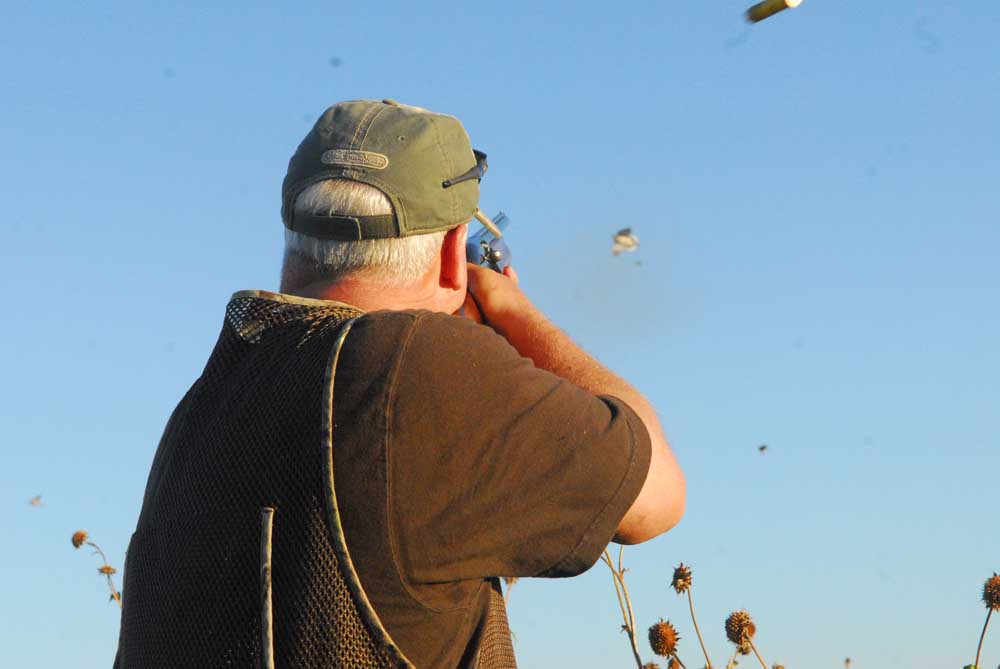Bright Future: Conditions right for a good dove season opener in Texas
Published 11:45 pm Friday, August 9, 2024

- Texas dove hunters should expect better days when the season opens in September. Mourning dove numbers have rebounded the last two years, and white-winged dove numbers are at a record high. (Steve Knight/Tyler Morning Telegraph)
Living in cities, declines in dove populations probably are not noticeable because there is always plenty of backyard food in the water.
In the wild, where the birds are at the mercy of Mother Nature like other wildlife, things like drought, heat and changing landscapes do make a difference.
Trending
Dove hunters in much of Texas have felt those downturns, sometimes extending the time it takes to limit, but in worst case scenarios making a limit nearly impossible.
Texas hunters, especially in the Central and North zones, experienced the impact of a drought-related drop in bird numbers that started in 2017 that continued through 2022. The good news is that in the world of dove hunting turnarounds can come quickly.
“We just got the results of our statewide dove survey in, and we have a big jump in numbers. Last year the count was up 44 percent. This year it is up 21 percent. The 34 million mourning doves we have in the state is the highest since 2017,” said Owen Fitzsimmons, Texas Parks and Wildlife Department’s dove program leader.
Fitzsimmons said much of the credit for the turnaround is increased rainfall. While the remainder of the state has not gotten rains like Northeast Texas this year, it has gotten enough to provide food and water for the birds capable of flying miles for each daily.
“Most of the state is looking good. We had a wet spring in most of the state. This summer we had steady rains, although the Edwards Plateau west to the Trans Pecos is dry,” Fitzsimmons said.
The state’s Cross Timbers region has felt the brunt of the recent decline, and while numbers are up it has not completely rebounded. The Panhandle population is also up and there was a 20- to 25-percent jump in the population this year in the Oaks and Prairies region that runs along I-35 from Central into North Texas. Despite the drought in the Edwards Plateau and Trans Pecos, spring rains should have resulted in good hatches.
Trending
While South Texas was the hot spot in the state for dove hunting the last two years and breeding numbers were up early in the spring, it could decline this fall with sunflowers withering because of drought.
Dove hunting is an odd sport that for most hunters lasts only the first two days of the season that begins Sept.1 in the North and Central zones, and for the special whitewing season in the south, and Sept. 14 for the regular season in the South Zone. However, in years like this with timely rains throughout the summer, Fitzsimmons said hunting could be good throughout the year.
“I think there will be good conditions into late September and October. Migration begins in early October, and it is always hit and miss as the birds move out. The best part of it is it is cooler and there are less people on the landscape,” Fitzsimmons said. He added South Texas can be exceptionally good late in the season.
The season is open until Oct. 27 in the Central and South zones and Nov. 10 in the North before opening again statewide in December for a winter season.
While it is called mourning dove season, for some hunters white-winged doves have become an important part of the bag. Once limited to a small area in far South Texas there are now an estimated 12 million whitewings statewide.
“Last year we pretty much had the highest number of whitewings as we have since we have kept records. This year the number has kicked in from that,” Fitzsimmons said.
South Texas is still the best spot for hunting whitewings, but as the birds have expanded statewide they can be found around almost every town. While many of the birds in the largest urban areas never leave, in others they often form flocks and can travel long distances to feed and water twice a day.
“There are still a lot we don’t understand about whitewings. There are 12 million of them in the state, but how many are available for harvest? We have not seen a concurrent jump in the harvest, so there are a lot that hunters never have a chance shooting at,” Fitzsimmons explained.
In recent years the number of dove hunters has dipped to between 250,000 and 300,000. Dips in hunters numbers are not unusual in bad years. Hopefully those numbers will be on the increase this year with the jump in bird numbers.







